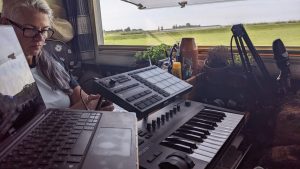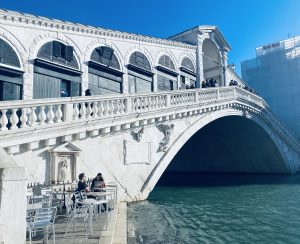Rules for Driving in italy
Are you planning on driving in Italy?
In our Italy Driving Essentials report, we cover all the basics for driving your motorhome or campervan in Italy. During out time in Italy, we learnt a thing or two that’s for sure, so we are sharing all our tips, tricks and our own experiences of driving in Italy.
This handy Italian travel guide will give you all the practical and essential information that you need to know before you go!
Go to our ‘Italy Travel Hub’ to understand everything about Italy, from wild camping rules, what you need to have in place to take your pet and even what mobile sim card to use
Driving In Italy - Jump To...
Driving In Italy - The Basic Rules
Here is our whistle stop tour of the basic road rules followed in Italy:
- Drive on the right and overtake on the left. Give way to the right.
- Compulsory seatbelts – on the spot fines are given.
- Headlights always dipped for motorway driving – even in the daytime.
- A-frames not legal for towing in Italy (as advised by the Italian Department of Transport).
- Crash Helmets compulsory if you take a scooter/moped.
- Drink drive limits are lower than the UK – (other than Scotland). 50mg per 100ml of blood. Be aware and careful when doing the wine trail road trips!
- If you can not pass another vehicle on a road, the descending vehicle must reverse to a passing point or priority should be given to the heavier vehicle.
Italian Road Speed Limits in a motorhome

The driving speed for your motorhome under 3.5 tonnes are:
- Urban – 50km/h (30 mph)
- Minor roads – 90km/h (56 mph)
- Major roads – 110km/h (68 mph)
- Motorways – 130km/h (80 mph)
The driving speed for your motorhome over 3.5 tonnes are:
- Urban – 50km/h (30 mph)
- Minor and Major roads – 80km/h (50 mph)
- Motorways – 110km/h (68 mph)
Essential Driving Requirements for Italy
The following items are those which are either legally required (M) or advised (A) whilst driving in Italy:
- Current passport (M)
- Valid Drivers Licence (M)
- Proof of Insurance (M)
- Registration documents for the motorhome or camper (M)
- Warning triangle in case of breakdown or accident (M)
- UK number plate sticker (post Brexit rule) (M)
- Headlight beam converters (already fitted to the motorhome) (M)
- Reflective metal backed board to fix to bikes on the back (M)
- Reflective vest (for each person in the motorhome) – you can get a fine if you are not wearing one if you breakdown on a motorway. (A)
- First Aid Kit (A)
- Spare bulbs and fuse box (A)

Italians drive fast and brake hard. They also park by nudging your bumper. If you are hiring a car, we recommend being very thorough in checking it before you hire it. Even video it with your smart phone!
Drink Driving Laws whilst driving in Italy
Whilst enjoying your epic Italian Road Trip, the recommendation is that you do not drink and drive in Italy. The drink drive limit is 0.5mg of blood alcohol. If you have less than 3 years driving experience, the legal limit is 0.0mg of blood alcohol.
Based on this information, we would recommend that whilst you are driving in Italy, it is best to steer clear of the alcohol and stick to the delicious Italian coffee.
Driving in Italy in the Winter
There are some great places to go to in Italy in the winter – not least down south for some warmer climates in the Winter time. However, driving in Italy does have some legal requirements
According to the Italian Highway Code (Codice della Strada), winter time is classed as running from the 15th October to the 15th April. During this period of time all drivers must are required to either have winter tyres or all season tyres, or the onboard means of providing not slip driving on snow or ice. This means having snow chains. Drivers typically have a months grace to get the types fitted. In some areas they are compulsory, such as the Aosta Valley and some other high mountain areas.
Speeding and Police Checks in Italy
Speed Cameras: Italy uses a combination of fixed and mobile speed cameras to enforce speed limits. Fixed camera locations are often signposted in advance, while mobile units can be set up without notice.
Police Checks: In addition to speed enforcement, police conduct checks for driving under the influence of alcohol or drugs, proper documentation (license, registration, insurance), and compliance with vehicle safety standards. Non-EU license holders may be required to have an International Driving Permit (IDP) along with their national driving license
Fines: Speeding and other traffic violations can result in on-the-spot fines. Authorities have the right to collect a portion of the fine immediately from foreign drivers. Fines increase significantly if not paid within the specified timeframe, and unpaid fines can lead to difficulties when re-entering Italy or the EU.
Low Emission Zones in Italy
Low Emission Zones (LEZs) in Italy, known locally as “Zona a Traffico Limitato” (ZTL), are areas where access for certain vehicles is restricted to reduce pollution. These zones are common in many Italian cities, especially in historic centres, to preserve air quality and reduce traffic congestion.
As the restrictions often vary by city, including the types of vehicles affected (e.g., based on emission standards, vehicle type), the times of day or week when restrictions apply, and whether residents or certain vehicles are exempt, you will need to check, but these are the major cities that have implemented a ZTL.
- Rome (Roma): Extensive ZTL areas, particularly in the historic center, with varying access times and regulations.
- Milan (Milano): Known for its Area C congestion charge zone, which restricts access to the city center.
- Florence (Firenze): Has a well-defined ZTL zone covering the historic center, with restrictions at specific times.
- Venice (Venezia): Unique in its approach due to its canal-based infrastructure, but restrictions apply to vehicle access in areas like Piazzale Roma and the islands.
- Turin (Torino): Implements ZTLs in its city center, with specific rules for different types of vehicles.
- Bologna: Enforces ZTL regulations in the historic city center, with particular emphasis on reducing vehicle traffic.
- Naples (Napoli): Has ZTL areas in parts of the historic center, with time-based restrictions.
- Genoa (Genova): Features ZTL areas in its historic center to protect its narrow streets and historic sites.
- Pisa: Known for its Leaning Tower, Pisa restricts vehicle access in its central parts to preserve the area.
- Siena: Famous for its medieval cityscape, Siena restricts vehicles in its historic center to maintain its charm and reduce pollution.
- Verona: Implements ZTLs to manage traffic around its historic sites, including the area around the Arena.
- Padua (Padova): Has ZTL areas to control traffic and protect its historic city center.
- Palermo: Sicily’s capital restricts vehicle access in the historic center to preserve its cultural heritage
Driving And Wild Camping in Italy
Wild camping is not allowed in Italy, with some fairly hefty fines ranging from 100 euros to 500 euros. Implementing the rules varies from place to place, much as it does in the UK. Generally, places that are national parks or places that get high footfall from tourists and on the beaches, are the places that are patrolled rigorously. Season plays a part too. High season it is tolerated less than low season, if at all.
If you are going to wild camp and take the risk of fines, (obviously not our recommendation), look for places that are very remote. Avoid camping in sight of roads or houses etc and don’t get all your ‘camping gear’ out of the van. It is OK to get a chair out to read a book or something, but don’t set up like you are staying for a week!
As always, with wild camping, take care of your surroundings, clean up if necessary to leave the place cleaner than you found it, and above all, leave only foot prints.
Driving Phrases for Your Italian Road Trip
Google Translate has to be the ‘Go To’ app for dealing with any language barriers in Italy. Its such a good app to have on your mobile, especially with the camera option to translate for you. However, sometimes it is easy to have some useful phrases to hand, so these are our useful Italian driving phrases:
- My motorhome has broken down: Il mio camper si è rotto
- Where is the nearest petrol station please?: Dove è la stazione di servizio più vicina, per favore?
- Can you help me please? Puoi aiutarmi, per favore?
- I am lost: Mi sono perso (Male) or Mi sono persa (female)
Our Final Thoughts on Driving in Italy
Driving in Italy can be quite an experience. Although the scenery and landscapes can be absolutely stunning, the streets can be narrow and winding and tricky to navigate in a large motorhome. I would also double check everything that Google maps tells you as that got us into some really tricky spots, in one case taking us over 3000m over the Alps, but we had to keep going as we couldn’t turn round and definitely couldn’t reverse our way out of the situation!
Italians are know for their ‘assertive’ driving on the roads. In the hectic cities, you need to be on the ball to just keep track of what everyone is doing. Don’t forget that there are some LEZ zones in some cities so remember to check these out before hand.
Expect the Italian drivers to pull off tight turns, fast take overs (where you and I would probably not even consider overtaking) and just fast driving in general. Keep your eyes out for scooters and motorcycles as well, as they weave in and out, especially in the cities.
Most of the time in Italy we parked outside of the towns and cycled or walked in, and in the major cities, we stayed at campsites, just to ensure that our motorhome was safe whilst we explored. Obviously that is an individual choice.
We hope you enjoyed this article and found it useful. If you found it useful, please do share with others using the share buttons below. If you think we have missed something – please do let us know. We read all our emails!





